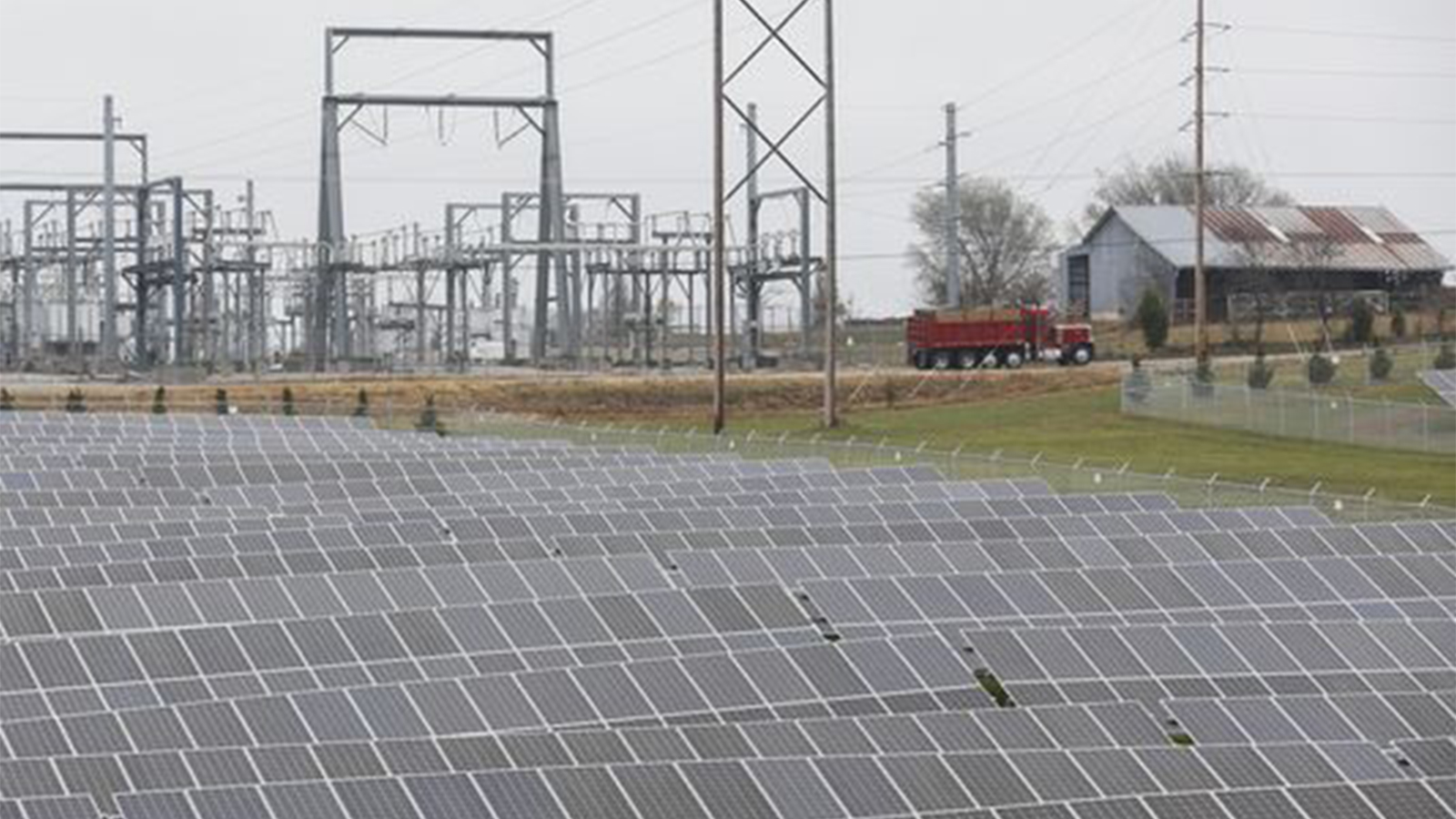NIXA, Mo. – If the people behind the largest solar farm in Missouri had their pick, they wouldn't have opted for Tuesday's thick gray clouds and spurts of rain to inaugurate the new Nixa power plant.
But the ribbon was cut anyway. The rows of more than 33,000 panels were still producing some power — just not at full capacity. City officials estimate the array will be able to handle about 9 percent of Nixa's power needs.
Efforts to build and open the farm, which started providing power this month, have been ongoing for years. Despite development delays, construction of the project was completed ahead of schedule, according to Loren Williamson of MC Power Co., who described the weather as one of those "panel-cleaning days."
The current developer, Gardner Capital, expects to be the long-term owner of the project, the News-Leader has reported. And past funding concerns and stalls notwithstanding, Nixa believes the project will eventually save the city $2.5 million by producing power that otherwise would be bought from City Utilities and the Southwestern Power Administration.
Mark Gardner, the owner of Gardner Capital, presented an idealistic interpretation of the Nixa solar farm's place in the grand scheme of things. Gardner said solar power has been on his mind since reading Popular Mechanics when he was younger and has been of increasing interest as the prospect of powering human activity with energy from the sun became more practical.
"This isn't just a gimmick," he said. "This is not a bunch of tech guys out in California dreaming about some unrealistic thing. This is real."
The advent of solar power is rooted in two simultaneous revolutions, Gardner said.
The first big change is a shift away from burning the Earth's resources for heat, light and energy, he said. These resources are finite, and practices like burning coal for power is bad for the environment.
"Coal is dead. It just is," Gardner said. "It's gonna take awhile. It's gonna die a bit of a slow death because there has to be a transition."
Though the sun will burn out someday, solar energy is a resource that is virtually renewable in perpetuity.
The second revolution, Gardner said, is an altered culture within the American business community.
"Corporate America is very good at doing things to promote making money (and) trying to avoid as much regulation as possible," Gardner said. But today, "shareholders are demanding that corporations represent the interests of shareholders — not just their financial interests, but the interests they hold on a personal level. They are demanding that corporations have a social conscience."
Gardner added that big advances in renewable energy are happening in smaller towns like Nixa. Around Missouri, his company has invested in solar facilities in Trenton, Macon, Rolla and Waynesville — nice towns, but not major cities.
"The truth is, there's no solar facility in either Kansas City or St. Louis that's even close to the size of this one," Gardner said. "They don't have solar energy. I don't know if they're living under a rock or what, but they haven't even figured it out."
Doug Colvin, Nixa's public works director, said Nixa will be getting about 20 percent of its energy from renewable sources once the facility starts producing at capacity.
"It's a great start, and we too will probably grow from there at some point in the future," Colvin said. "... Our outcome of this is basically moving toward a stewardship of our environment. This has all been said before today, and we're very proud to be a part of that."
Colvin said in a later interview that the Nixa electric utility — which is taxpayer-owned — has invested about $100,000 in the project. The land at 1565 W. Mt. Vernon St. — 72 acres, about 50 of which are covered in solar arrays — is owned by a limited liability company registered to state Sen. Jay Wasson, R-Nixa.
Though it could be a while before the clouds clear, Nixa's push for more renewable energy isn't alone in southwest Missouri.
City Utilities, which provides electricity to Springfield, has reported increased power generation from renewable sources to about 30 percent this year, though recent figures from the municipal utility put that figure at more than 35 percent. This is up from 8 percent of power from renewables in 2014, the News-Leader has reported, while coal usage has dropped from 77 percent to 35 percent.
Power from a local solar farm — the largest in the state until Nixa's went online — has been providing CU with power since 2014, and CU also buys energy from wind farms in Oklahoma and Kansas. A new bank of batteries in Springfield gives CU the ability to store energy from renewables, according to previous News-Leader reporting.
The Empire District Electric Co., which provides power across southwest Missouri, announced Oct. 31 it was aiming to add wind energy to its portfolio. The move was projected by the company to save customers nearly $10 per month over a 20-year period.
That same day, in a filing with the Missouri Public Service Commission, Empire provided more details about its project, such as putting the total cost-savings at $325 million over 20 years.
Empire's project hinges on federal tax credits for wind projects completed by the end of 2020 and the closing of its coal plant in Asbury, a small town north of Joplin, by April 2019.


